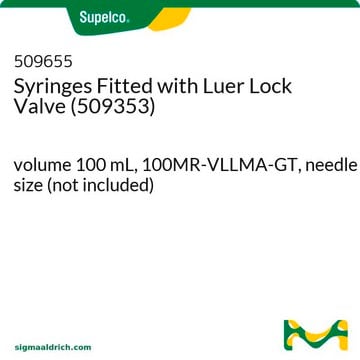01-3540
6-Aminocaproic acid
SAJ special grade, ≥99.0%
Synonim(y):
ε-Aminocaproic acid, 6-Aminohexanoic acid, EACA
About This Item
Polecane produkty
klasa czystości
SAJ special grade
Próba
≥99.0%
Postać
solid
dostępność
available only in Japan
mp
207 °C
207-209 °C (dec.) (lit.)
rozpuszczalność
water: soluble
Zastosowanie
peptide synthesis
ciąg SMILES
NCCCCCC(O)=O
InChI
1S/C6H13NO2/c7-5-3-1-2-4-6(8)9/h1-5,7H2,(H,8,9)
Klucz InChI
SLXKOJJOQWFEFD-UHFFFAOYSA-N
informacje o genach
human ... PLAT(5327) , PLG(5340)
Szukasz podobnych produktów? Odwiedź Przewodnik dotyczący porównywania produktów
Działania biochem./fizjol.
Kod klasy składowania
11 - Combustible Solids
Klasa zagrożenia wodnego (WGK)
WGK 2
Temperatura zapłonu (°F)
Not applicable
Temperatura zapłonu (°C)
Not applicable
Środki ochrony indywidualnej
dust mask type N95 (US), Eyeshields, Gloves
Certyfikaty analizy (CoA)
Poszukaj Certyfikaty analizy (CoA), wpisując numer partii/serii produktów. Numery serii i partii można znaleźć na etykiecie produktu po słowach „seria” lub „partia”.
Masz już ten produkt?
Dokumenty związane z niedawno zakupionymi produktami zostały zamieszczone w Bibliotece dokumentów.
Nasz zespół naukowców ma doświadczenie we wszystkich obszarach badań, w tym w naukach przyrodniczych, materiałoznawstwie, syntezie chemicznej, chromatografii, analityce i wielu innych dziedzinach.
Skontaktuj się z zespołem ds. pomocy technicznej







